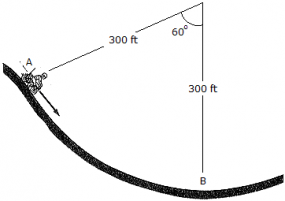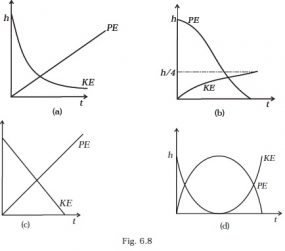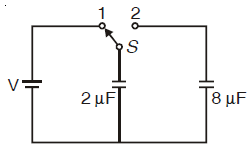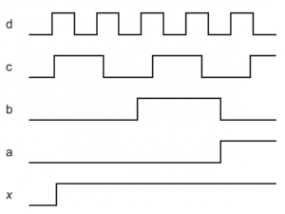 Introduction
Introduction
The National Testing Agency (NTA) has released the JEE Main Notification 2019. Joint Entrance Exam (JEE) Main is the national level undergraduate engineering entrance exam. The exam is the gateway for the admission to various B.Tech/ B.E. programmes offered by 31 NITs, 23 IIITs and 23 CFTIs.
This Examination was being conducted by the Central Board of Secondary Education (CBSE) till 2018. From 2019, JEE Main will be conducted by National Testing Agency (NTA), twice a year. Check the JEE Main Chemistry important samples to score maximum marks.
 Syllabus
Syllabus
| JEE Main Syllabus | |
|---|---|
| 1. | Mathematics |
| 2. | Physics |
| 3. | Chemistry |
JEE Main 2020 Detailed Syllabus PDF - Download Here
JEE Mains Physics Syllabus| Units | Topics |
|---|---|
| Physics and Measurement |
|
| Kinematics |
|
| Laws Of Motion |
|
|
|
Dynamics of uniform circular motion:
|
|
| Work, Energy and Power |
|
|
|
| Rotational Motion |
|
| Gravitation |
|
| Properties Of Solids and Liquids |
|
| Thermodynamics | |
| Kinetic Theory Of Gases |
|
| Oscillations and Waves | Periodic motion period, frequency, displacement as a function of time Periodic functions. Simple harmonic motion (S.H.M.) and its equation; phase; oscillations of a spring -restoring force and force constant; energy in S.H.M. – kinetic and potential energies; Simple pendulum – derivation of expression for its time period; Free, forced and damped oscillations, resonance |
| Wave motion Longitudinal and transverse waves, speed of a wave. Displacement relation for a progressive wave. Principle of superposition of waves, reflection of waves, Standing waves in strings and organ pipes, fundamental mode and harmonics, Beats, Doppler effect in sound | |
| Electrostatics | Electric charges Conservation of charge, Coulomb’s law-forces between two point charges, forces between multiple charges; superposition principle and continuous charge distribution. |
Electric field
|
|
| Magnetic Effects Of Current and Magnetism |
|
| Electromagnetic Induction and Alternating Currents |
|
| Electromagnetic Waves Currents |
|
| Dual Nature Of Matter and radiation |
|
| Optics |
|
| Electromagnetic Waves |
|
| Atoms and Nuclei |
|
| Electronic Devices |
|
| Communication Systems |
|
 Weightage
Weightage
JEE Mains Chapter Wise Weightage for Physics
| Physics Chapters and topics | Average no. of Questions from the chapter | Weightage of the chapter and topic |
|---|---|---|
| Modern Physics | 5 | 20 |
| Heat and Thermodynamics | 3 | 12 |
| Optics | 3 | 12 |
| Current Electricity | 3 | 12 |
| Electrostatics | 3 | 12 |
| Magnetics | 2 | 8 |
| Unit,Dimension and Vector | 1 | 4 |
| Kinematics | 1 | 4 |
| Laws of motion | 1 | 4 |
| Work,Power and Energy | 1 | 4 |
| Centre Of Mass, Impulse and Momentum | 1 | 4 |
| Rotation | 1 | 4 |
| Gravitation | 1 | 4 |
| Simple Harmonic Motion | 1 | 4 |
| Solids and Fluids | 1 | 4 |
| Waves | 1 | 4 |
| Electromagnetics Induction ; AC | 1 | 4 |
 Resources
Resources
 Samples
Samples
1.The numerical value of a given quantity is
- A. independent of unit
B. directly proportional to unit
C. inversely proportional to unit
D. directly proportional to the square root of the unit
- A. spring constant
B. surface energy
C. surface energy
D. acceleration due to gravity
- A. ampere
B. ohm
C. tesla
D. weber
- A. illuminating power
B. luminous flux
C. luminous intensity
D. None of these
- A. Displacement
B. Angle
C. Couple
D. Speed
1. Bullet one is fired in the north direction with the muzzle velocity u. Find the velocity of the bullet as seen from the observer on the earth
- A. u + v
B. v - u
C. u
D. v
- A. a = 0.617 m/[latex]{s}^{2}[/latex]
B. a = 1.037 m/[latex]{s}^{2}[/latex]
C. a = 1.451 m/[latex]{s}^{2}[/latex]
D. a = 0.833 m/[latex]{s}^{2}[/latex]
- A. 4.78kg
B. 2.25kg
C. 7.5kg
D. None of these
- A. 1720 m
B. 2252
C. 1452
D. 1208
- A. v = 51.1 ft/, a[latex]{s}^{2}[/latex] = 9.83 ft/[latex]{s}^{2}[/latex]
B. v = 51.1 ft/[latex]{s}^{2}[/latex], a = 8.18 ft/[latex]{s}^{2}[/latex]
C. v = 51.1 ft/[latex]{s}^{2}[/latex], a = 10.31 ft/[latex]{s}^{2}[/latex]
D. v = 51.1 ft/[latex]{s}^{2}[/latex], a = 8.69 ft/[latex]{s}^{2}[/latex]
1. A metre scale is moving with uniform velocity. This implies
(a) the force acting on the scale is zero, but a torque about the centre of mass can act on the scale.
(b) the force acting on the scale is zero and the torque acting about centre of mass of the scale is also zero.
(c) the total force acting on it need not be zero but the torque on it is zero.
(d) neither the force nor the torque need to be zero.
- A. the force acting on the scale is zero, but a torque about the centre of mass can act on the scale.
B. the force acting on the scale is zero and the torque acting about centre of mass of the scale is also zero.
C. the total force acting on it need not be zero but the torque on it is zero
D. neither the force nor the torque need to be zero.
- A. frictional force along westward
B. muscle force along southward.
C. frictional force along south-west.
D. muscle force along south-west.
- A.136 N
B.134 N
C.158 N
D.68 N
- A. it is at rest.
B. the path can be a straight line or circular and the ball travels with uniform speed.
C. all parts of the ball have the same velocity (magnitude and direction) and the velocity is constant.
D. the centre of the ball moves with constant velocity and the ball spins about its centre uniformly.
- A. conservation of energy.
B. Newton’s first law only.
C. Newton’s second law only.
D. both Newton’s second and third law.
1. A man squatting on the ground gets straight up and stand. The force of reaction of ground on the man during the process is
- A. constant and equal to mg in magnitude.
B. constant and greater than mg in magnitude.
C. variable but always greater than mg.
D. at first greater than mg, and later becomes equal to mg.
- A. same as the same force law is involved in the two experiments.
B. less for the case of a positron, as the positron moves away more rapidly and the force on it weakens.
C. more for the case of a positron, as the positron moves away a larger distance.
D. same as the work done by charged particle on the stationary proton
- A. constant and equal to mg in magnitude.
B. constant and greater than mg in magnitude.
C. variable but always greater than mg.
D. at first greater than mg, and later becomes equal to mg.
- A.Kinetic energy.
B.Potential energy.
C.Total mechanical energy.
D.Total linear momentum.
1. Find the angular acceleration of the cylinder about the axis passing through center of mass
- A. [latex]\frac {a}{3r}[/latex]
B.[latex]\frac {a}{4r}[/latex]
C.[latex]\frac {a}{5r}[/latex]
D. [latex]\frac {2a}{3r}[/latex]
- A. The angular acceleration at the instant it is released [latex]\frac {5g}{11a}[/latex]
B. Moment of inertia of the system about pivot is 11[latex]{ma}^{2}[/latex]
C. The angular acceleration at the instant when the rod makes an angle θ with horizontal [latex]\frac {5gcosθ}{11a}[/latex]
D.All are correct.
- A. [latex]\frac {ma}{3}[/latex]
B. [latex]\frac {ma}{2}[/latex]
C. [latex]\frac {2ma}{3}[/latex]
D. [latex]\frac {ma}{4}[/latex]
- A. (mh+ML/2) ω
B. (mh+ML) ω
C. (mh+ML/3) ω
D. None of these
- A. Is zero
B. Goes on increasing as x is increased
C. Goes on decreasing as x is increased
D. Remains constant for all positions of the particle
1. As observed from earth, the sun appears to move in an approximate circular orbit. For the motion of another planet like mercury as observed from earth, this would
- A. be similarly true
B. not be true because the force between earth and mercury is not inverse square law.
C. not be true because the major gravitational force on mercury is due to sun.
D. not be true because mercury is influenced by forces other than gravitational forces.
- A. the solar cells and batteries in satellites run out.
B. the laws of gravitation predict a trajectory spiraling inwards.
C. of viscous forces causing the speed of satellite and hence height to gradually decrease.
D. of collisions with other satellites.
- A. will be elliptical.
B. will not be strictly elliptical because the total gravitational force on it is not central.
C. is not elliptical but will necessarily be a closed curve.
D. deviates considerably from being elliptical due to influence of planets other than earth.
- A. the torque is zero.
B. the torque causes the earth to spin.
C. the rigid body result is not applicable since the earth is not even approximately a rigid body.
D. the torque causes the earth to move around the sun.
- A. will be directed towards the centre but not the same everywhere.
B. will have the same value everywhere but not directed towards the centre.
C. will be same everywhere in magnitude directed towards the centre.
D. cannot be zero at any point
1. What is the term for the amount of disorder in a system?
- A. Enthalpy
B. Chaos
C. Entropy
D. Disequilibrium
- A. Compressing the gas isothermally or adiabatic ally will require the same amount of work
B. Which of the case (whether compression through isotherm or through adiabatic process) requires more work will depend upon the atomicity of the gas
C. Compressing the gas isothermally will require more work to be done
D. Compressing the gas through adiabatic process will require more work to be done
- A. Isothermal
B. Adiabatic
C. Isobaric
D. Isochoric
- A. Big Temperature Unit
B. Brenwald’s Thermal Unit
C. Britain Temperature Unification
D. British Thermal Unit
- A. 100 J
B. 99 J
C. 90 J
D. 1 J
1. The temperature at which the r.m.s. velocity of H2 becomes escape velocity from the earth is,
- A. 10059 °C
B. 10059 K
C. 10332 °C
D. 10332 K
- A. mv
B. 5 mv
C. [latex]\frac {mv}{10}[/latex]
D. 10mv
- A. 4.8 m/s
B. 4.08 m/s
C. 4.5 m/s
D. 4 m/s
- A. 3 (Cp – Cv) = R
B. [latex]\frac {Cp - Cv}{3}[/latex]= R
C. Cp – Cv = R
D. Cp – 3Cv = R
- A. Volume of gas
B. Temperature of gas
C. Nature of gas
D. Density of gas
1. The displacement of particle performing simple harmonic motion is given by, x = 8 sin wt + 6 cos wt, where distance is in cm and time is in second. The amplitude of motion is
- A. 10 cm
B. 14 cm
C. 2 cm
D. 3.5 cm
- A. 36 m
B. 1 m
C. [latex]\frac {1}{63}[/latex]
D. [latex]\frac {1}{6}[/latex]
- A. Vs = V
B. Vs = [latex]\frac {v}{2}[/latex]
C. Vs = 2V
D. Vs = [latex]\frac {v}{3}[/latex]
- A. Directly proportional to amplitude of the wave
B. Directly proportional to square of amplitude of wave
C. Directly proportional to velocity of the wave
D. Directly proportional to square of velocity of the wave
- A. 10 : 8
B. 9 : 1
C. 4 : 1
D. 2 : 1
1. A capacitor of 2 μF is charged as shown in the diagram. When the switch S is turned to position 2, the percentage of its stored energy dissipated is
- A. 75%
B. 80%
C. 0%
D. 25%
- A. The potential difference between the plates decreases K times
B. The energy stored in the capacitor decreases K times
C. The change in energy stored is [latex]\frac {1}{2}[/latex] [latex]{Cv}^{2}[/latex][latex]\frac {1}{2}[/latex]- 1
D. The charge on the capacitor is not conserved
- A. Y
B. -Y
C.[latex]\frac {1}{Y}[/latex]
D. - [latex]\frac {1}{Y}[/latex]
- A. 1:4
B. 1:2
C. 2:1
D. 4:1
- A. Negative and distributed uniformly over the surface of the sphere
B. Negative and appears only at the point on the sphere closest to the point charge
C. Negative and distributed non-uniformly over the entire surface of the sphere
D. Zero
1. The supply voltage to a room is 120 V. The resistance of the lead wires is 6 Ω. A 60 W bulb is already switched on. What is the decrease of voltage across the bulb, when a 240 W heater is switched on in parallel to the bulb?[JEE 2013]
- A. Zero volt
B. 2.9 volt
C. 13.3 volt
D. 10.04 volt
- A. Linear increase for Cu, exponential increase for Si
B. Linear increase for Cu, exponential decrease for Si
C. Linear decrease for Cu, linear decrease for Si
D. Linear increase for Cu, linear increase for Si
- A. 1 × [latex]{10}^{-5}[/latex] V
B. 1 × [latex]{10}^{-7}[/latex] V
C. [latex]{10}^{-9}[/latex]V
D. 1 × [latex]{10}^{-10}[/latex] V
- A. 10A
B. 12A
C. 14A
D. 8A
- A. doubled
B. four times
C. one fourth
D. halved
1. A galvanometer of resistance 50 Ω gives a full scale deflection for a current 5 × [latex]{10}^{-4}[/latex] A. The resistance that should be connected in series with the galvanometer to read 3 V is
- A. 5059 Ω
B. 595 Ω
C. 5950 Ω
D. 5050 Ω
- A. 9.1 × [latex]{10}^{-11}[/latex]weber
B. 6 × [latex]{10}^{-11}[/latex]weber
C. 3.3 × [latex]{10}^{-11}[/latex]weber
D. 6.6 × [latex]{10}^{-9}[/latex]weber
- A. Statement - I is true, Statement - II is true, Statement - II is the correct explanation of Statement-I.
B. Statement - I is true, Statement - II is true, Statement - II is not the correct explanation of Statement-I.
C. Statement - I is true, Statement - II is false.
D. Statement - I is false, Statement - II is true.
- A. the momentum changes but the kinetic energy is constant
B. both momentum and kinetic energy of the particle are not constant
C. both momentum and kinetic energy of the particle are constan
D. kinetic energy changes but the momentum is constant
- A. 2 Ω
B. 0.1 Ω
C. 3 Ω
D. 0.01 Ω
1. In a series RL circuit, the resistance and inductive reactance are the same. Then the phase difference between the voltage and current in the circuit is
- A. π/4
B. π/2
C. π/6
D. zero
- A. 600 V
B. 4000 V
C. 400V
D. 1 V
- A. −190 V
B. −10 V
C. 10 V
D. 190 V
- A. 0.2 H
B. 0.4 H
C. 0.8 H
D. 0.1 H
- A. 2A
B. 18A
C. 12A
D. 1A
1. Arrange the following electromagnetic radiations per quantum in the order of increasing energy: [JEE Mains 2016]
A : Blue light
B : Yellow light
C : X-ray
D : Radiowave
- A. A, B, D, C
B. C, A, B, D
C. B, A, D, C
D. D, B, A, C
- A. A chargeless particle
B. An accelerating charge
C. A charge moving at constant velocity
D. A stationary charge
- A. 1.73 V/m
B. 2.45 V/m
C. 5.48 V/m
D. 7.75 V/m
- A. Electric energy density is half of the magnetic energy density.
B. Electric energy density is equal to the magnetic energy density.
C. Both electric and magnetic energy densities are zero.
D. Electric energy density is double of the magnetic energy density.
- A. Cu
B. Au
C. Be
D. Pb
1. When a metallic surface is illuminated with radiation of wavelength λ, the stopping potential is V. If the same surface is illuminated with radiation of wavelength 2 λ, the stopping potential is 4/V. The threshold wavelength for the metallic surface is
- A. 5/2 λ
B. 3 λ
C. 4 λ
D. 5 λ
- A. +3 V
B. +4 V
C. –1 V
D. –3 V
- A. 0.03 nm
B. 0.04 nm
C. 0.12 nm
D. 0.06 nm
- A. 1 photon with energy 10.2 eV and an electron with energy 1.4 eV
B. 1 photon with energy 10.2 eV and an electron with energy 1.4 eV
C. 2 photon with energy 1.4 eV
D. one photon with energy 3.4 eV and 1 electron with energy 1.4 eV
- A. depends on the nature of the metal used
B. depends on the intensity of the radiation
C. depends both on the intensity of the radiation and the metal used
D. is the same for all metals and independent of the intensity of the radiation
1. A photon of energy 10.2 eV collides inelastically with a Hydrogen atom in ground state. After a certain time interval of few micro seconds another photon of energy 15.0 eV collides inelastically with the same hydrogen atom, then the observation made by a suitable detector is
- A. 1 photon with energy 10.2 eV and an electron with energy 1.4 eV
B. 2 photon with energy 10.2 eV
C. 2 photon with energy 1.4 eV
D. one photon with energy 3.4 eV and 1 electron with energy 1.4 eV
- A. 510 nm
B. 650 nm
C. 400 nm
D. 570 nm
- A. increase
B. decrease
C. be zero
D. become exactly half
- A. is proportional to mass
B. is proportional to impulse
C. is inversely proportional to impulse
D. does not depend on impulse
- A. 2
B. 1/2
C. √2
D. 1/√2
1. Atoms and Nuclei Class 12 MCQ Question 1. When a β-particle is emitted from a nucleus then its neutron-proton ratio
- A. increases
B. decreases
C. remains unchanged.
D. may increase or decrease depending upon the nucleus.
- A. isotopes
B. isotones
C. isomers
D. isobars
- A. 27
B. 40
C. 56
D. 120
- A. Motion of electrons and ion
B. Chemical reaction
C. Fusion reaction
D. Fission reaction
- A. momentum
B. charge
C. mass
D. none of these
1. If a, b, c, d are inputs to a gate and x is its output, then, as per the following time graph, the gate is:
- A. AND
B. OR
C. OR
D. OR
- A. 10 mV
B. 20 mV
C. 30 mV
D. 15 mV
- A. 67
B. 67
C. 100
D. 50
- A. 300 K
B. 360 K
C. 382 K
D. 364 K
- A. 150V
B. 100V
C. 300V
D. 400V
1. A modem is classified as low speed if data rate handled is
- A. upto 100 bps
B. upto 250 bps
C. upto 250 bps
D. upto upto 250 bps600 bps
- A. low pass filter
B. high pass filter
C. band pass filter
D. band stop filter
- A. 1
B. 2
C. 4
D. 6
- A. microwave links
B. coaxial cable link
C. open wire link
D. either (b) or (c)
- A. CB
B. CC
C. CE
D. CE or CC







